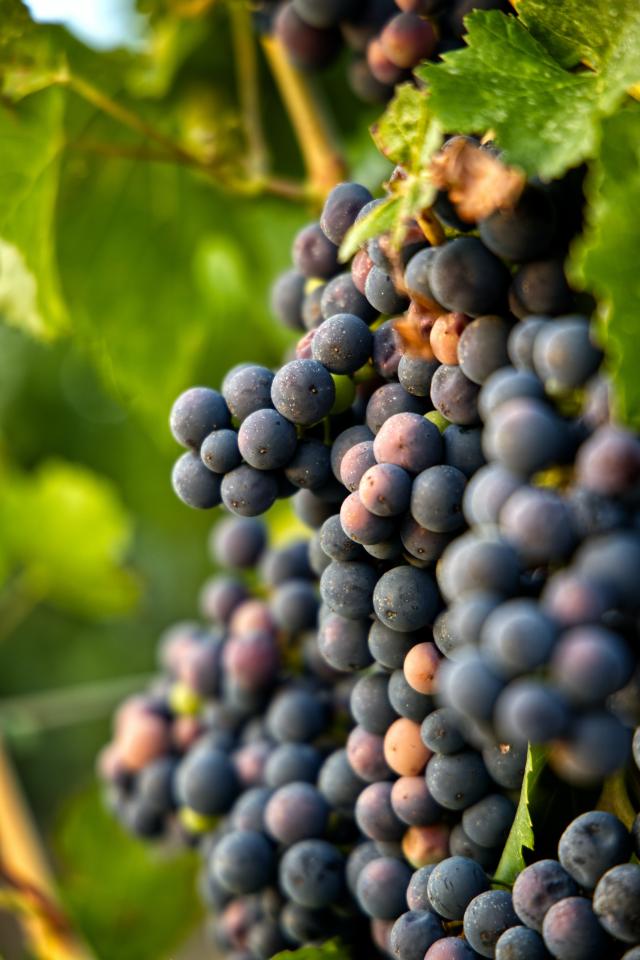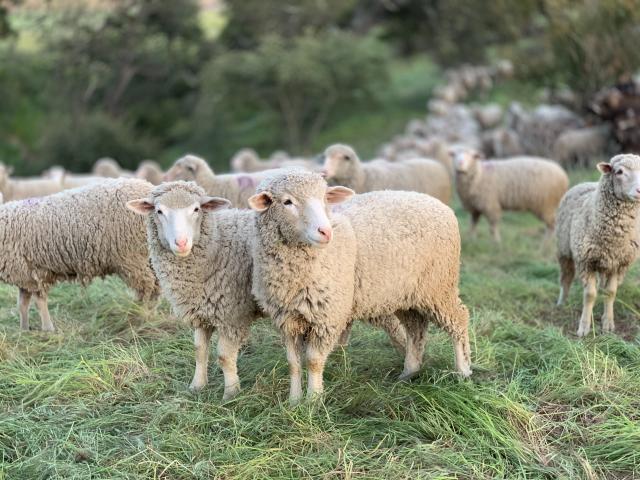
Rural Bank’s Australian Agriculture Outlook 2024 aims to help farmers make informed decisions by presenting a detailed view on how the year ahead is likely to unfold.
The report finds Australian agriculture encountered a challenging environment over the back half of 2023 with drier weather leading to lower crop production but contributing to significantly higher cattle production and record lamb production as producers turned off stock in response.
Lower commodity prices also impacted Australian farmers in 2023, while improved labour supply and lower fertiliser costs provided some relief, but margins continue to remain tight. Export demand continued to rebound across the cropping and horticulture sectors, though demand for livestock and wool remained subdued, primarily due to economic pressures. Ongoing economic challenges, the prospects of a hotter summer, and below average commodity prices are weighing on the outlook for the first half of 2024.
Andrew Smith, Rural Bank head of agribusiness development said: “As was the case for 2023, the three key themes that will impact Australian agriculture in the first half of 2024 continue to be seasonal conditions, trade conditions and economic headwinds, but looking to the upside, a more favourable economic environment is expected to begin supporting agricultural markets in the back half of 2024.
“Another positive is the forecast breakdown of both the El Niño and IOD climate drivers that will hopefully see a return to more average conditions for eastern Australia, benefitting the cropping sector for the winter sowing and lifting horticultural production in the first half of the year off the back of more favourable conditions for fruit and vegetable crops and lower irrigation costs.
“We expect to see growing export demand for grains and horticultural produce along with rising beef production and further opportunities for export growth in the red meat sector, improving the outlook for Australian producers in the first half of 2024. Lower lamb prices should also keep export volumes closer to current levels, but we see further appetite for lamb returning as retail prices trend lower, boosting domestic consumption, with prices likely to improve for producers in the new year,” Mr Smith said.
The report found that improving trade conditions throughout the back half of 2023 and normalisation of supply chains were a positive and will continue to support Australian agricultural exports through the first half of 2024, as will the normalisation of Australia’s trade relationship with China.
“We also see trade with India and the United Kingdom continuing to expand in 2024, with a potential trade deal with the United Arab Emirates another positive development – however, volatility in global grain markets remains a concern, driven by Russia’s ongoing invasion of Ukraine.
“Economic headwinds will again be challenging for agribusiness in the first half of 2024, with slower economic growth in major economies like the EU and US expected to affect global consumption and with farm input costs forecast to remain stubbornly above long-term averages.
“Seasonal labour costs continue to remain high with no relief in sight and elevated fertiliser and diesel prices will similarly continue to keep the cost of production high, driven by expensive gas used in fertiliser production, volatile oil production and a low Australian dollar,” Mr Smith concluded.
Cattle
Rising beef production and opportunities for export growth provide an improved outlook for Australian producers in the first half of 2024
From the field: “Australian cattle prices should trend higher during the first half of 2024 after experiencing significant declines throughout 2023. Greater opportunities for exports in key markets will be the driving force supporting improved prices. However, the dry weather outlook in key cattle producing regions could limit any strong price growth. This is set to keep beef production rising and restocker demand subdued,” said Michael Gorogo, senior agribusiness relationship manager – Queensland.
Cropping
El Niño ended Australia’s run of three consecutive years of record crops. Production forecast to drop 34 per cent from last year. Strong demand for limited supplies to support prices.
From the field: “Growers across the country have faced varied challenges producing this season’s crop. Dry conditions in northern regions of the country have led to below average yields, while widespread rainfall at harvest time in southern areas has many concerned about quality downgrades. After three consecutive years of record production and historically high prices growers are likely in a better position this season to systematically market their crop to extract the best value from reduced production,” said Wayne Saunders, regional manager agribusiness – Western Victoria.
Dairy
Milk production will be flat but farmgate milk prices will fall from record highs. Global prices and demand to remain flat early in 2024.
From the field: “The Australian dairy industry has changed significantly in the past few years. Processors continue to reshape businesses to adjust to a lower domestic supply environment. Farmer profitability has been consistently strong for multiple seasons, allowing for investment on and off farm. With farmgate prices expected to ease next season we can expect a renewed focus on production efficiency with input costs remaining elevated and securing labour still a challenge,” said Mik Harford, agribusiness relationship manager – Leongatha.
Horticulture
Strong production and growing export demand provide a positive outlook for the first half of 2024.
From the field: “Drier weather conditions combined with relatively cheap irrigation costs are expected to drive above average production and quality across most key varieties coming into 2024. While temporary water costs are expected to slowly rise as the season progresses, this is unlikely have a large impact on output in the short term. Price outlooks are more varied following a broad easing across fruit and vegetable markets over the last six months. Domestic demand for premium horticultural produce remains a key concern,” said Wayne Saunders, regional manager agribusiness – North West Victoria.
Sheep
Lamb prices are expected to strengthen into 2024 but remain well below levels seen in prior years. Production is likely to remain relatively high.
From the field: “A tough six months for the Australian sheep industry has been driven by a limited capacity to process the large national flock. Lamb prices are expected to see some recovery in the new year while the outlook for mutton remains subdued. Production is expected to remain relatively high in the first half of 2024 but is expected to fall from the high levels seen in 2023,” said Ryley Verley, agribusiness relationship manager – South Australia.
Wool
Wool markets to remain stable in 2024 with ongoing soft demand, a small decline in supply and continued shearing cost pressures.
From the field: “Stability could be the defining feature of the wool industry in 2024. Economic conditions for consumers are set to keep demand for wool constrained. Any price improvement will likely come from a small decline in production resulting from dry conditions. With prices set to remain below-average, wool growers will remain challenged by the high cost of shearing. Even as challenges remain, wool has come into greater focus for producers. The volatility in livestock markets has made sales into a relatively more stable and reliable wool market an important opportunity for cashflow,” said Jess Seaver, agribusiness relationship manager – Mildura.
South Australia
Australian almond production has been forecast to rebound in 2024. Total output is estimated to rise 28 per cent to 140,000 tonnes in 2024. A varroa mite related shortage of beehives in key regions and challenging conditions were the key factors in last season’s reduced yields. Strong export demand combined with low domestic carryover stocks will also push almond prices higher over the first half of the year. Though coming off a low base.
Wine grape prices are expected to see a more mixed outlook in 2024. Substantial red wine inventory levels will continue to see uncontracted red grapes remain unsold. We don’t anticipate further reductions in red wine grape prices. Though they are unlikely to lift from current lows for the 2024 vintage. White grape producers remain in a better position, with a more sustainable supply and demand outlook.
South Australia had a strong start to the 2023/24 cropping season with average to above average rain up to the end of June. In the subsequent months totals fell below average along with the state’s production outlook. Total winter crop production is forecast at 8.2 million tonnes, a 33 per cent decline from last season’s record production.
South Australian milk production is expected to lift marginally after 2022/23 supply hit a five-year low. While not as good as previous seasons, pasture growth has been favourable with late spring rains, though quality is compromised. Anticipated lower farmgate prices will squeeze margins for producers as input costs remain elevated.
Lamb markets are expected to strengthen in 2024 as the surge in supply eases. Increased processing capacity and softer retail prices are expected to see a lift in domestic consumption. The outlook is for warm and dry weather in the new year which will continue to limit restocker confidence and restrict the uplift in prices.
South Australia’s cattle prices are forecast to increase throughout the next six months, as strong export demand continues to provide support for local prices.
Stability could be the defining feature of the wool industry in 2024. Economic conditions for consumers are set to keep demand for wool constrained. Any price improvement will likely come from a small decline in production resulting from dry conditions. With prices set to remain below-average, wool growers will remain challenged by the high cost of shearing. The Southern Regional Indicator sat at 1,140c/kg at the end of November, 5.2 per cent lower year-on-year and 16.9 per cent below the five-year average.










